 |
||||||||||||||||||||
|
||||||||||||||||||||
|
Before & After |
||||||||||||||||||||
Testimonials |
||||||||||||||||||||
|
||||||||||||||||||||
|
||||||||||||||||||||
Surgical Options Immediate Function |
||||||||||||||||||||
|
||||||||||||||||||||
|
Two-Stage |
||||||||||||||||||||
|
||||||||||||||||||||
 |
||||||||||||||||||||
|
Restorative options Fixed Prosthetics Individual Teeth: Bicon implants can be restored by intra-orally or extra-orally cementing porcelain fused to metal (PFM) crowns or all-ceramic crowns to their abutments. Alternatively, they may be restored with the cementless and screwless Bicon Integrated Abutment Crowns™ (IACs). |
||||||||||||||||||||
|
Removable Prosthetics |
||||||||||||||||||||
|
||||||||||||||||||||
|
Frequently Asked Questions What is a dental implant? The Bicon dental implant serves as the replacement for the root portion of a missing natural tooth. It is machined from surgical-grade titanium alloy (Ti-6Al-4V) to exacting specifications. A dentist places the implant into either the upper or lower jawbone. After a period of two to four months of healing, the implant integrates with the bone and becomes a secure anchor for a replacement tooth, a fixed bridge, a removable partial, or a complete denture. Am I a candidate for a dental implant? If you are missing one or more teeth, then you are a candidate for a dental implant. Dental implants will allow you to smile, speak, and eat with confidence and comfort. Can a Bicon implant be used as an alternative to root canal treatment? YES! Not all teeth are good candidates for root canal treatment. Root-canal-treated teeth are susceptible to decay and fracture, while implants cannot decay and almost never break. Bicon implants are an excellent and prudent alternative to the root canal, post and core, crown lengthening, and crowning procedures. Often, the cost of saving a tooth with a variety of treatments can exceed the cost of the placement and restoration of a Bicon implant. Is the implant ever rejected by the body? The implant is machined from surgical-grade titanium alloy (Ti-6Al-4V), which is a biocompatible material. However, there is a slight possibility that it will not integrate with bone. If this were to occur, the implant would be replaced with another one. It is highly unlikely that the second implant would not integrate. What if I smoke? Smoking can inhibit proper healing of an implant. However, this does not prevent smokers from having implants successfully placed and restored. You should speak with your dentist for more specific information relating to your dental needs and the effects of smoking. How much discomfort will I experience? Minimal to none. While undergoing treatment, you will receive local anesthesia. (Some clinicians may choose to use other forms of anesthesia.) You may have mild post-surgical soreness for up to 72 hours. An over-the-counter pain reliever will alleviate the discomfort for most patients. What will the appearance of my mouth look like during my treatment? During treatment, your dentist will often be able to provide you with a temporary prosthesis that will have the look and feel that you need during this period of healing. With the Bicon implant, it is often possible to have a fixed transitional tooth immediately after the placement of the implant. How much time is required to have an implant procedure? A single dental implant placement is usually completed in less than an hour as an office procedure with local anesthesia. The implant is then allowed to heal with the bone for a minimum of eight weeks. If you have poor quality bone and bone-grafting procedures are necessary, the overall process can take up to 12 months or more. Your dentist will determine which surgical procedure is best for you. How much will it cost and does insurance cover implant treatment? Costs vary depending upon the clinician that you choose for your treatment and upon your individual dental needs. In general, implants are not covered by insurance; however, some insurance companies now reimburse for dental implants. Detailed questions about your individual needs and how they relate to insurance should be discussed with your dentist and insurance provider. How do I properly maintain the implant once treatment is completed? Ironically, a dental implant requires less maintenance than a natural tooth. Simply brush it as though it were a natural tooth. What is a sinus floor bone augmentation? When an upper posterior tooth is lost, the floor of the maxillary sinus drops down into the space formerly occupied by the root of the lost tooth. In order to place an implant, it is often necessary to put the sinus floor back up to where it originally was by adding a synthetic bone substitute material. This procedure is called a sinus floor bone augmentation or it may also be called a sinus lift. What is a ridge split? After the loss of a tooth the bone formerly around the tooth resorbs, often leaving a very narrow ridge of bone. In order to place an implant, the ridge of bone is split as though it were a piece of corrugated cardboard being expanded to provide a wider space between each side. For the upper jaw, this is accomplished at the same time that the implant is placed; however, for the lower jaw it requires a second surgical visit three weeks prior to placing the implant. What is a bone graft? A bone graft is a surgical procedure for adding height or width to a jawbone in order to increase its volume for the placement of an implant. How can I learn more about Bicon Dental Implants? Please visit www.bicon.com.
If you are missing one or more teeth and wish to enjoy the confidence of beautiful teeth, then you are a candidate for a Bicon Dental Implant. |
||||||||||||||||||||
|
||||||||||||||||||||
|
|
||||||||||||||||||||





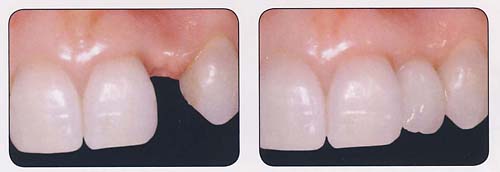
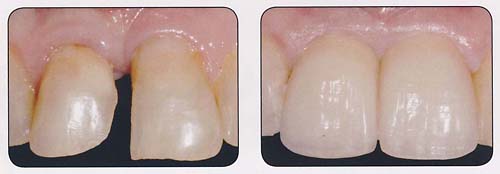
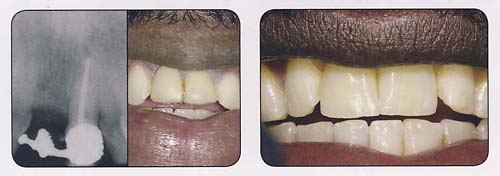


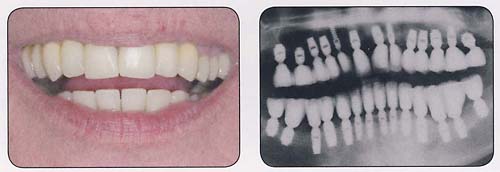
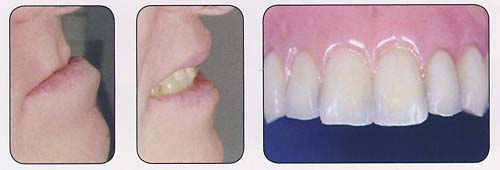
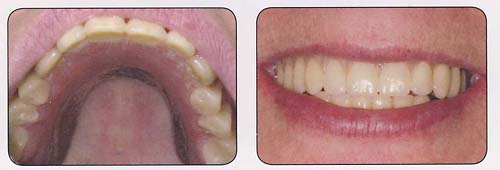

























 Home
Home Product
Product Article
Article Gallery
Gallery Webboard
Webboard Contact Us
Contact Us